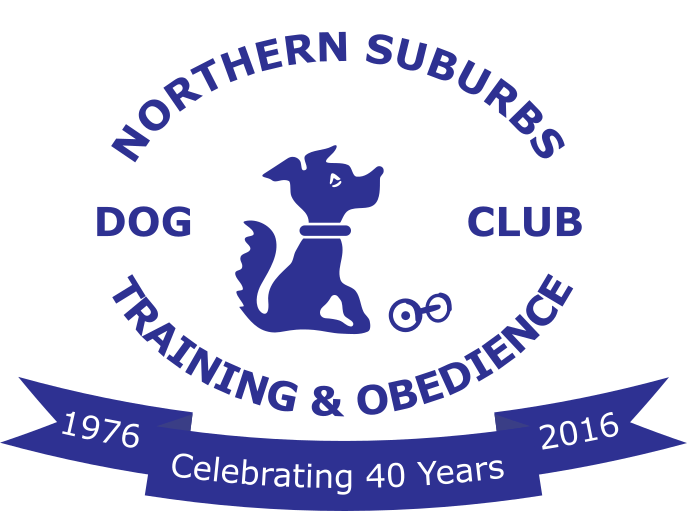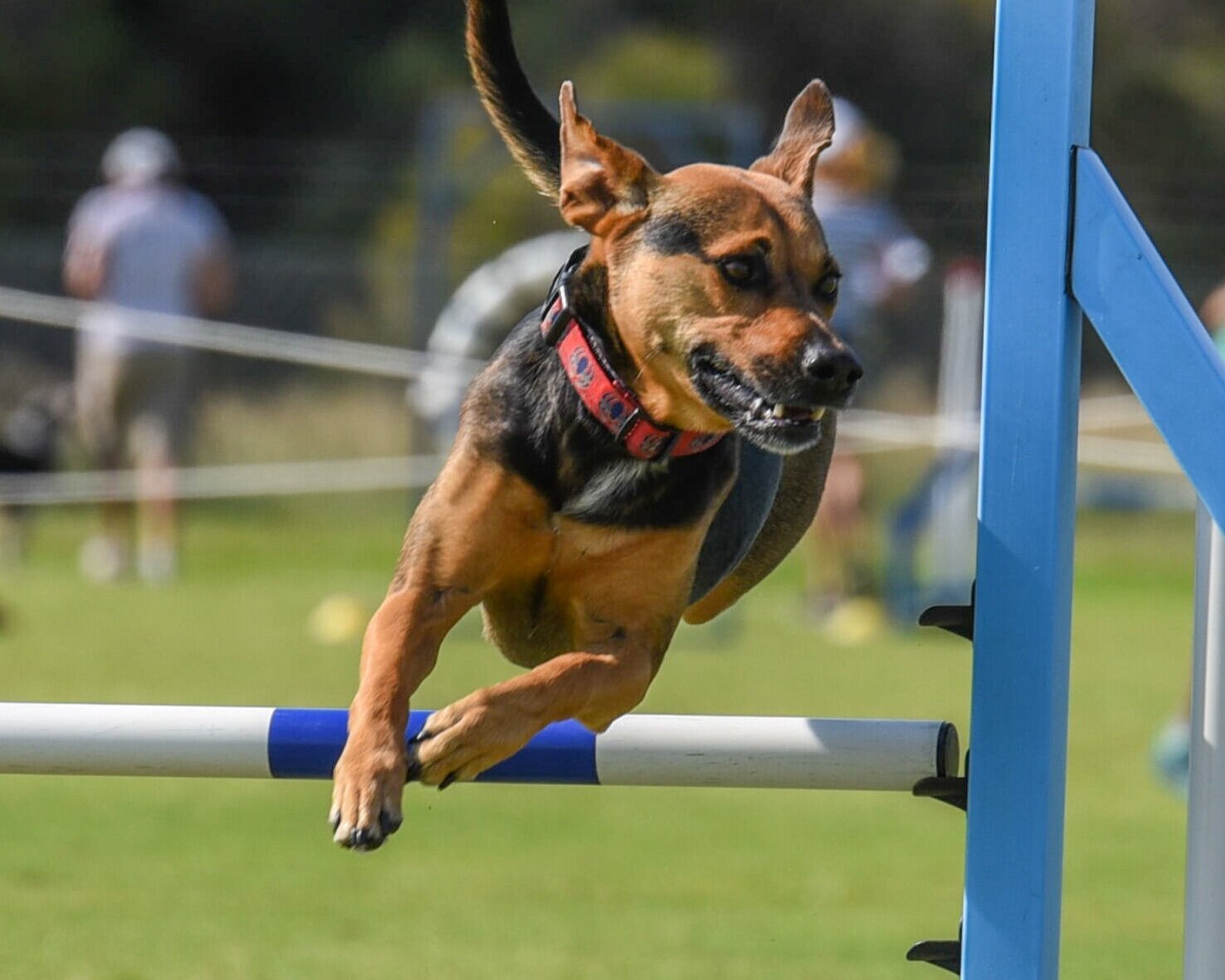Agility
The wait list for Agility is currently open.
We are delighted to see so many of our dogs enjoying the sport of agility. this does however mean that we have had to restrict the numbers of new members to maintain safe and manageable class sizes.
Agility runs from term to term and the intake of new members will depend on spaces available at the time. Expression of interest forms will be posted on this page prior to the start of each term and once completed, those interested will be contacted and advised of whether there are places available.
New members will have to undergo an assessment prior to registering to ensure their dog is able to cope with this exciting environment. (see below for details.)
Is Agility for You?
Agility is a fun and challenging sport for both dog and handler. The training environment is highly stimulating and distracting for dogs, so one of the most important prerequisites is that your dog will work willingly and be engaged with you at all times despite what is going on around them. They will need to be able to work off-lead without running over to other dog/handler teams working close by.
At NST&ODC we teach everything from foundations level right through to competition level, and classes are designed to teach the handler how to train their dog at home. During class, we will give you the information and skills for you to train your dog but it will require a time commitment from you on a daily basis to keep up with training.
General Information
Agility training is held on Wednesday evenings at Carine Open Space. Junior classes set up at 6:30pm, followed by the Seniors Class at 8pm. Training is according to the school term calendar. Training does not take place if the temperature is over 35 degrees or in wet weather.
Anyone wishing to participate in Agility at NST&ODC is required to be a member of the Club. You are required to purchase both a General Club Membership (annual) and the Agility Membership (renewable each term). You can do this online. If you intend to do agility only, you still require General Club Membership but do not need to purchase this until you pass the assessment criteria.
You may begin basic agility training with your dog once it has reached 14 months of age (or older) and in good general health, is a healthy weight for agility and is structurally sound.
Dogs that show aggression towards either people or other dogs will not be tolerated.
Bitches in season should not attend training. It is not fair to other club members to bring a bitch in season onto the training grounds.
Assessment Criteria
Firstly, you must complete an Expression of Interest form. If there is a place available you will be emailed with an invitation to register for an assessment - assessments take place on the first week of each intake term (see Club Calendar for term dates).
You must pass all of the following criteria to be eligible. Preference will be given to existing club members that have reached obedience level 2A
Attention – You will be asked to get and maintain your dog’s attention whilst moving through other dogs. It is up to you how you keep your dog’s attention, be it using food, a toy or simply talking to your dog. This exercise is done on lead.
Distraction work –You will be expected to maintain your dog’s attention in a stimulating and distracting environment. You will be asked to walk around some equipment (approximately 15 meters away) whilst other dogs are using it.
Recall – You will need to be able to do an off-lead recall with your dog. Again, there will be the distraction of other dogs working on equipment nearby. Your dog must come straight to you without disrupting the dogs that are working. If you do not think your dog will wait you may ask the instructor to hold your dog until you call it.
Moving off lead – You will be asked to remove your dog’s lead and run around with your dog. Your dog is expected to stay with you at all times. Again, this will be done approximately 15 meters from other dogs working on a course.
In sound health - Your dog will be assessed regarding it’s weight, whether it’s general structure is at all compromised and it’s general demeanor (whether shy, boisterous, energetic, wary and either aggressive or reactive). If the dog does not pass the assessment solely because of this, then a second instructor can be asked to assess the dog.
Join the Agility Wait list here
What To Bring To Class
A Crate or stake – This is a must have. There are many times during training when you will be asked to leave your dog on its own. We do prefer crates as they are safer for your dog when left alone.
A flat buckle or quick release collar
A lead – Preferably 2 meters in length and made from fabric (no chain leads)
Toys – Your dog’s favourite toy that it finds extremely rewarding (tug toys are great)
Water and bowl – This is especially important during the summer months. Don’t forget water for yourself either.
Treats – Bring LOTS of treats. You will be surprised how many you will use, especially during beginner classes. Make sure your treats are highly valuable to the dog.
A hungry dog – If you normally feed your dog in the evening we recommend that you delay its dinner until after training. A hungry dog will generally be more eager to work and you also lessen the likelihood of your dog suffering from bloat.




